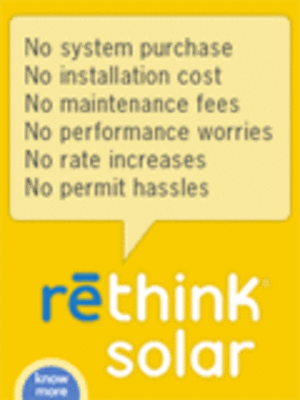A passive solar home is one that takes advantage of the suns energy to heat and cool a home. Its basic design involves a few unique features that allows an average home to save tons of money just based on its location, orientation and the materials used to create it. By collecting the suns energy through southern facing windows, storing and then releasing the heat, a passive solar home design can save energy all year long.
Southern Exposure
While every home faces the south, not every home has a bank of windows that faces the south. Although a large bank of windows on the southern side of the home can add significant heat to cold climate homes, it’s not the best idea to use solar passive design for homes in a warm weather climate. By installing a roof overhang that blocks summer time solar gain when the sun is higher in the sky, a passive solar design can work well in warmer climate conditions. Be sure that when you design a passive solar design, you take into consideration your areas natural climate conditions and adjust the southern solar gain window bank and heat transfer controlling methods accordingly.
Solar Mass
When solar energy enters a southern facing bank of windows, the heat must be stored somewhere and that somewhere is what is known as a solar mass. A solar mass is typically a stone, block or concrete structure that stores the heat of the sun and slowly releases it long after the sun has gone down. Solar masses include concrete slabs, tile floors and stone walls. They are usually built within close proximity of the southern facing window bank.
Conduction, Convection and Radiation
These three methods of solar gain distribution are needed to spread the heat throughout the structure. Conduction is when solar heat stored in the solar mass is distributed through means like direct contact such as when you bare feet get warm from a concrete floor in direct sunlight. Convection occurs through the air or water and transfers heat through areas of the home such as a Trombe wall. Radiation occurs from radiant heat sources like a woodstove or dark colored tile that radiates heat. These three methods of transferring heat from the solar mass are a must have in any solar passive home design.
Controlling Heat Transfer
While it’s crucial that these three methods of heat transfer from the solar mass work together during the cooler months of the year, they are not welcome during the warmer months and must be controlled. A large overhang can prevent solar gain during the summer months but only if properly sloped to the suns summer angle. That’s why most southern facing homes use a combination of roofing overhangs, awnings and window treatments to limit the homes solar gain during the warmer summer months.
More Green Home Improvement Articles from Eric Brennan
How to Paint a New Metal Door
How to Strip Desk Paint
How to Clean Paintbrushes

